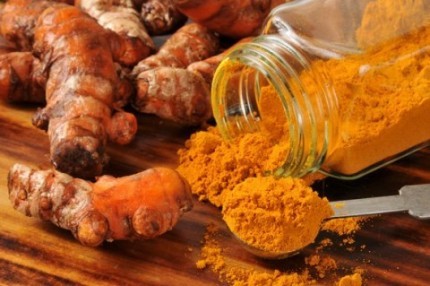Though turmeric is now known to have many health benefits and applications, there are still people who don’t understand or know what’s in turmeric that can make you healthy. Check out the article we found at Wakeup-World.
If there has ever been one plant that “does it all”, turmeric (Curcuma longa), seems the perfect candidate. Its many health benefits and applications fill entire libraries: a search for “turmeric” on Web of Science returned 6.681 hits, and a search for “curcumin”, turmeric’s best known constituent, yielded a whopping 28.122 papers. At point of writing, the Cochrane Library holds 94 publications of controlled clinical trials involving turmeric: whoever says that knowledge of its health benefits is ficticious or anecdotal at best, has accomplished a high degree of ignorance. Even more so since turmeric has been used for culinary and medicinal purposes in Asia for over 6000 years (Hutchins-Wolfbrandt & Mistry 2011) – Western science today only confirms what people have naturally known and practiced for millennia (Goel et al. 2008). In the past two decades, turmeric and curcumin have been extensively studied for their therapeutic benefits as antioxidant, anti-inflammatory, cardioprotective, renoprotective, immunomodulatory, cancer chemopreventive, antidepressant, and neuroprotective agent (Pakfetrat et al. 2014, Chuengsamarn et al. 2012).
What’s In It?
Turmeric belongs to the ginger plant family and is native to southwest India. It contains c. 4-5% curcumin, a polyphenol and strong antioxidant which gives it its bright yellow color. Other turmeric constituents include iron, manganese, potassium, vitamins C & B6, and omega 3 & 6 fatty acids – just to name a few of over 300 compounds identified from this plant (Ravindran et al. 2009, Gupta et al. 2013). Out of all these, curcumin received most investigative attention by far.
Turmeric is also known and used as food additive E100. Funny enough, it is FDA (U.S. Food & Drug Administration) approved as such (FDA website), but not yet as a drug (Ji 2015) – despite all that you’ll read below.
Turmeric’s Many Talents ~ an Overview
- anti-inflammatory action (Bengmark et al. 2009)
- one of the most impressive free radical scavengers
- selectivity: kills cancer cells without harming healthy tissue (Ravindran et al. 2009)
- inhibits human cancer cell lines in vitro* (melanoma, prostate, breast, lung, myeloma, leukemia, neuroblastoma, oral) (Bengmark et al. 2009) *[in vitro = in glass: studying something outside its normal biological context, e.g. human cancer cells in a petri dish or animal proteins in a solution vs in vivo:studying something within the living plant, animal, or human]
- positive synergistic effects with chemotherapy (James et al. 2015, Gupta et al. 2013, Kanai et al. 2010) and radiation treatment (Anand et al. 2008)
- chemopreventive (Goel et al. 2008)
- anti-mutagenic effects (Polasa et al. 1992)
- neuroprotective activity (Pu et al. 2013), including against fluoride toxicity (Sharma et al. 2014) (rodent models)
- ameliorates ischemic stroke (Pu et al. 2013)
- effective antidepressant (Sanmukhani et al. 2013)
- anti-microbial (Goel et al. 2008) & anti-fungal action (Benmark et al. 2009)
- cardiovascular support & thrombosuppressive (Goel et al. 2008)
- tends to decrease the proinsulin/ insulin ratio (Chuengsamarn et al. 2012)
- anti-arthritic (Goel et al. 2008)
- may play a key role in supporting thyroid health (Group 2016)
- liver protective (Goel et al. 2008)
- alcohol detoxification (Sunagawa et al. 2015)
- Goel et al. (2008) offer a referenced list of clinical trials in relation to specific ailments; Bengmark et al. (2009) list diseases and curcumin’s known effects on them.
Turmeric’s Many Talents ~ A Closer Look
Animal studies have demonstrated the potential of curcumin against such maladies as cancer, lung, liver, metabolic, autoimmune, cardiovascular and neurological diseases, and numerous other inflammatory conditions. Curcumin’s clinical efficacy against human biliary disease was first studied in 1937, with remarkably good results for gallbladder inflammation. The most common human diseases where curcumin exhibited positive effects include cardiovascular disease, arthritis, uveitis, cancer, ulcerative proctitis, Crohn’s disease, ulcerative colitis, peptic ulcer, gastric ulcer, idiopathic orbital inflammatory pseudotumor, oral lichen planus, gastric inflammation, vitiligo, psoriasis, acute coronary syndrome, atherosclerosis, diabetes, Dejerine-Sottas disease, diabetic nephropathy, diabetic microangiopathy, lupus nephritis, renal (kidney) conditions, acquired immunodeficiency syndrome, irritable bowel disease, tropical pancreatitis, b-thalassemia, cholecystitis, and chronic bacterial prostatitis (Gupta et al. 2013). I purposefully gave the long – and still incomplete – list to illustrate just what an allrounder turmeric is. To not have it in our kitchen seems rather mad. =)
Anti-inflammatory Agent
Inflammation is the body’s normal response to harmful stimuli and as such appropriate and beneficial. Things only turn problematic when inflammation becomes prolonged and persistent – in other words, chronic. This state does not benefit the organism anymore, but instead fundamentally contributes to degenerative illness. An increasing awareness of chronic inflammation as underlying cause of degenerative disease (e.g. cancer, diabetes, atherosclerosis, rheumatoid arthritis, gastric, ocular, and respiratory diseases) coincides with recognizing turmeric’s potent ability to decrease systemic inflammation (Bengmark et al. 2009). Its powerful free radical scavenging action and rich antioxidant content render turmeric a natural powerhouse to enhance and balance bodily systems.
Cancers
Curcumin’s anticancer activities are well established (Killian et al. 2012). It inhibits the survival and proliferation of almost all types of tumor cells (Ravindran et al. 2009). Specific cancers shown to benefit from curcumin include prostate, skin, brain, blood (leukemia, multiple myeloma), head, neck, breast, lung, bladder, and colorectal cancer, with rarely observed counterindications (Anand et al. 2008, Killian et al. 2012).
Curcumin Mechanisms of Action & Effects
Cancer undergoes three major stages of development: tumor formation, growth, and spread. Often, drugs target any one of these stages. Curcumin, however, can interfere with all three – one reason why some deem it as little prone to resistance development by tumors: curcumin can always take another route (see Ravindran et al. 2009). In animal models, curcumin induced cell death (apoptosis & autophagy) in cancer cells and also inhibited tumor growth, invasion, and in vivo metastasis (Ravindran et al. 2009, Gupta et al. 2013). In vivo animal studies also clearly suggest curcumin’s anticancer potential when administered either alone or in combination with currently employed chemotherapeutic agents or radiation (Goel et al. 2008). This wealth of positive results in animals spurred a host of human studies, including dozens of clinical trials.
Curcumin blocks the expression of growth and metastasis promoting genes (Goel et al. 2008) and so inhibits angiogenesis (connecting the tumor to blood vessels) – a process crucial to tumor growth and spread. It also sensitizes cancer cells to conventional treatment methods (chemotherapy and radiation) (Hutchins-Wolfbrandt & Mistry 2011). One paper reported supplementation with eight grams curcumin per day in combination with the drug gemcitabine as safe and well tolerated in pancreatic cancer patients (Gupta et al. 2013), as were up to two grams curcumin daily in a phase I clinical trial that combined FOLFOX chemotherapy with curcumin (James et al. 2015). Curcumin by itself also gave significantly improved results when tested on patient-derived colorectal liver metastase cells and performed better than FOLFOX and 5-FU (another cancer drug) in some patients (their isolated cells in culture) (James et al. 2015).
Curcumin also decreased PSA levels in men with increased PSA values (PSA: prostate specific antigen, a marker of prostate health). Taking one gram of curcumin daily for a week increased vitamin C and E levels and decreased markers of oxidative stress (see below) in patients with precancerous lesions (Gupta et al. 2013).
Tolerability
Curcumin disrupts and inhibits mechanisms necessary for cancer development and progression in so many ways (Goel et al. 2008) it seems quite superior to any synthetic drug targeting only one pathway – especially when considering its excellent tolerability (non-toxicity). Up to 12g a day have been reported as unproblematic (Goel et al. 2008), whereas conventional cancer drugs are about one hundred times more toxic (Ji 2015a) – not to mention causing any unwanted or adverse effects possibly necessitating another drug to alleviate them. Turmeric and curcumin are very well tolerated by healthy people and patients alike and usually show no adverse effects (Chuengsamarn et al. 2012, Pakfetrat et al. 2014).
Chemoprevention
The term chemoprevention was coined by M.B. Sporn in 1976, who defined it as a “preventive modality in which natural or synthetic agents can be employed to slow, stop, reverse, or prevent the development of cancer” (Park et al. 2013). Curcumin exhibits known chemopreventive effects for breast cancer, stomach cancer, and colorectal cancer – and likely for other types as well. Anti-metastasis effects have been shown for breast cancer and kidney cancer in rats (Anand et al. 2008).
Next Article: 4 Ways To Use Turmeric as Medicine + Recipe (Video)
Read Full Article: Everything You Ever Wanter to Know About Turmeric – Nature’s Powerhouse of Wellbeing







Arnetta
Jul 15. 2016
Any natural remedies for multiple myeloma?
Valerie Tabor Brown
Sep 14. 2016
Carol Senters like this site